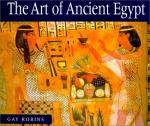|
This section contains 1,823 words (approx. 7 pages at 300 words per page) |

|
Formulated Long-Standing Strategies.
During the Early Dynastic period (3100–2675 B.C.E.) and the Third Dynasty (2675–2625 B.C.E.), Egyptian artists formulated basic strategies for their works of art that their descendents continued to utilize for the next 3,000 years. Objects such as stelae with relief carving, seated statues of kings, standing deities, and seated private officials assumed a form in art that remained quite static. Yet Egyptologists notice significant differences in style and in the details that distinguish this period from later works of art. Continuity and change of this sort is a defining characteristic of Egyptian art.
Stela of Wadj.
King Wadj, who ruled Egypt some time in mid-Dynasty One (3100–2800 B.C.E.), erected two stelae in front of his tomb in Abydos in middle Egypt. The stelae marked the place where worshippers made offerings after the king's burial. The relief on...
|
This section contains 1,823 words (approx. 7 pages at 300 words per page) |

|




